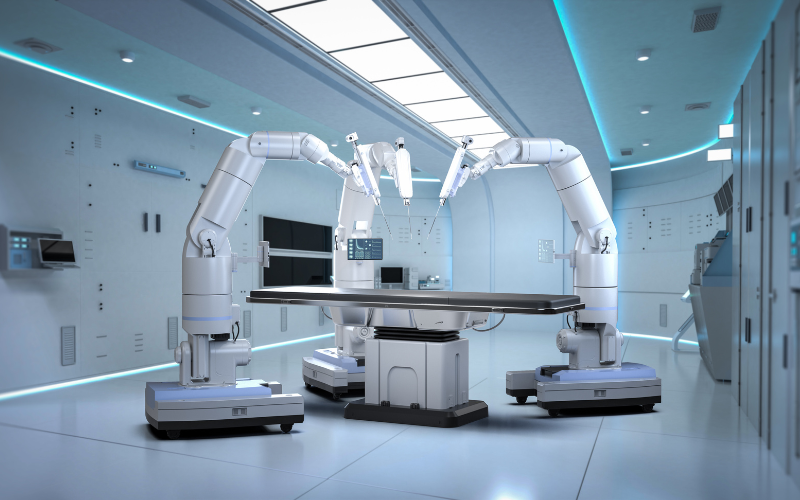The Power of Predictive Analytics in Diabetes Prevention

In 2021, the Global Data Analytics Market was worth $31.8 billion. By 2030, it is estimated to reach $329.8 billion. That’s a compound annual growth rate (CAGR) of 29.9% for the forecast period from 2022 to 2030.
Over the past decade, most of our daily activities have become digital. We now rely heavily on digital tools, devices, and online platforms for various aspects of our daily lives. That includes communication, shopping, entertainment, work, and healthcare.
In the past, we would primarily analyze data to understand its characteristics and make observations. But, with the advent of machine learning, we can do more than that. It allows us to gain deeper insights, make predictions, and make informed decisions.
Predictive analytics is mostly used in marketing (for behavioral targeting), finance (for predicting cash flow), and entertainment (for determining staffing needs). But, how can it help people with diabetes?
I decided to take a deep dive and see what research has to say about the power of predictive analytics in preventing diabetes.
What is predictive analytics for disease prediction?
Predictive analytics is a tool that can help people predict what might happen in the future based on what happened in the past. It means utilizing data to anticipate upcoming trends and events. By examining historical data, it can forecast potential situations.
By utilizing sophisticated computer algorithms and models, predictive analytics has the ability to sift through vast amounts of data, including patient information, medical records, test results, and images. This process enables the identification of patterns and trends that can provide valuable insights into pre-diabetes or diabetes-related complications.
This invaluable tool empowers healthcare providers to stay ahead of the game, enabling them to proactively identify potential health risks and take action before they escalate. By offering personalized care, they can ensure optimal outcomes for individuals living with diabetes.
How can predictive analytics prevent and control diabetes?
Big data analytics technology has a lot to offer. Wearables like CGM and AI-powered apps can provide data-driven insights.
I have been using health apps and a CGM for quite some time now. I believe that harnessing the power of big data, even if you don’t have diabetes, can help you make informed decisions and achieve better outcomes. Here is how.
Remote monitoring
Monitoring plays a key role in preventing diabetes. Regular monitoring of glucose levels can help identify prediabetes or early signs of type 2 diabetes. The sooner you spot the problem, the easier it is to add lifestyle modifications that can prevent the onset of full-blown diabetes.
Predictive analytics can be very useful for diabetes care and prevention. It can leverage data to anticipate potential outcomes and guide personalized interventions.
For example, it can predict blood glucose levels by analyzing historical data. Such as physical activity, carb intake, and sleep patterns. This information helps patients make informed decisions and make the right lifestyle changes.
According to a recent report, using home health monitoring can enable remote patient monitoring for people with diabetes and high blood pressure. It is crucial to detect hypertension and diabetes early since these chronic conditions can lead to severe complications if diagnosed later.
Monitoring can also help you become more aware of your risk factors for developing diabetes. For example, if your family has a history of diabetes, like mine, or other risk factors, such as obesity or high blood pressure, then you can take proactive steps to address these risk factors. This can help lower your chances of developing diabetes.
Experts support the use of predictive analytics and machine learning in the early detection of type 2 diabetes mellitus.
A study published in Open Access Journal has demonstrated that machine learning (ML) has strong predictive capabilities and provides accurate forecasts for type 2 diabetes (T2DM). These findings highlight the potential of ML as a reliable tool for predicting and monitoring T2DM.
Clinical decision support
Clinical decision support (CDS) plays a vital role in the prevention of diabetes. Individuals with diabetes can benefit from a dedicated healthcare team that assists them in effectively managing their condition, including treatment plans, dietary choices, and daily activities.
For someone who is trying to prevent diabetes, a CDS system is equally important. Healthcare experts can help assess your individual risk factors.
For a long time, healthcare professionals couldn’t get all the information they needed, because of the limited resources and time. Today, the healthcare industry is changing. Thanks to the plenty of data available, these organizations can use modern devices to coordinate, perform, and improve patient care.
Real-time insight is particularly important. This is where predictive analytics comes in handy. It can help experts provide proactive care. Instead of simply treating symptoms or addressing health issues as they arise, proactive care focuses on preventing health problems and promoting well-being. This involves regular check-ups, screenings, and assessments.
Lower healthcare costs
I found that more and more healthcare facilities are using big data analytics to reduce costs of patient care, inefficient stock management, and staff allocation. One significant advantage of data analytics is the digitization of medical records.
Electronic health records (EHRs) are important in this process. They contain a wealth of clinical information, generating a vast amount of data. EHRs capture real-time updates of administrative and diagnostic patient information.
They provide details on:
-
procedures
-
patient demographics
-
length of hospital stay
-
associated fees
By utilizing EHRs, healthcare providers can improve the quality of care, mainly through timely warnings and reminders for diagnostic procedures.
Furthermore, EHRs enhance performance. They streamline routine tasks, reduce errors, and expedite data access and entry. These improvements significantly reduce costs within the healthcare system.
Data analytics is currently assisting managers and administrators in effectively addressing staffing issues. Data analytics uses smart techniques to predict and analyze past staffing figures. As well as local weather patterns, seasonal illnesses, holidays, and other relevant factors specific to each organization. This results in decreased labor expenses.
Conclusion
The potential of predictive analytics to revolutionize diabetes prevention is immense. By enabling continuous monitoring, personalized preventive measures, and customized treatment outcomes, this approach holds the key to minimizing the burden of diabetes. As time progresses, the integration of AI and ML in tools and devices will further enhance the effectiveness of managing this condition.



